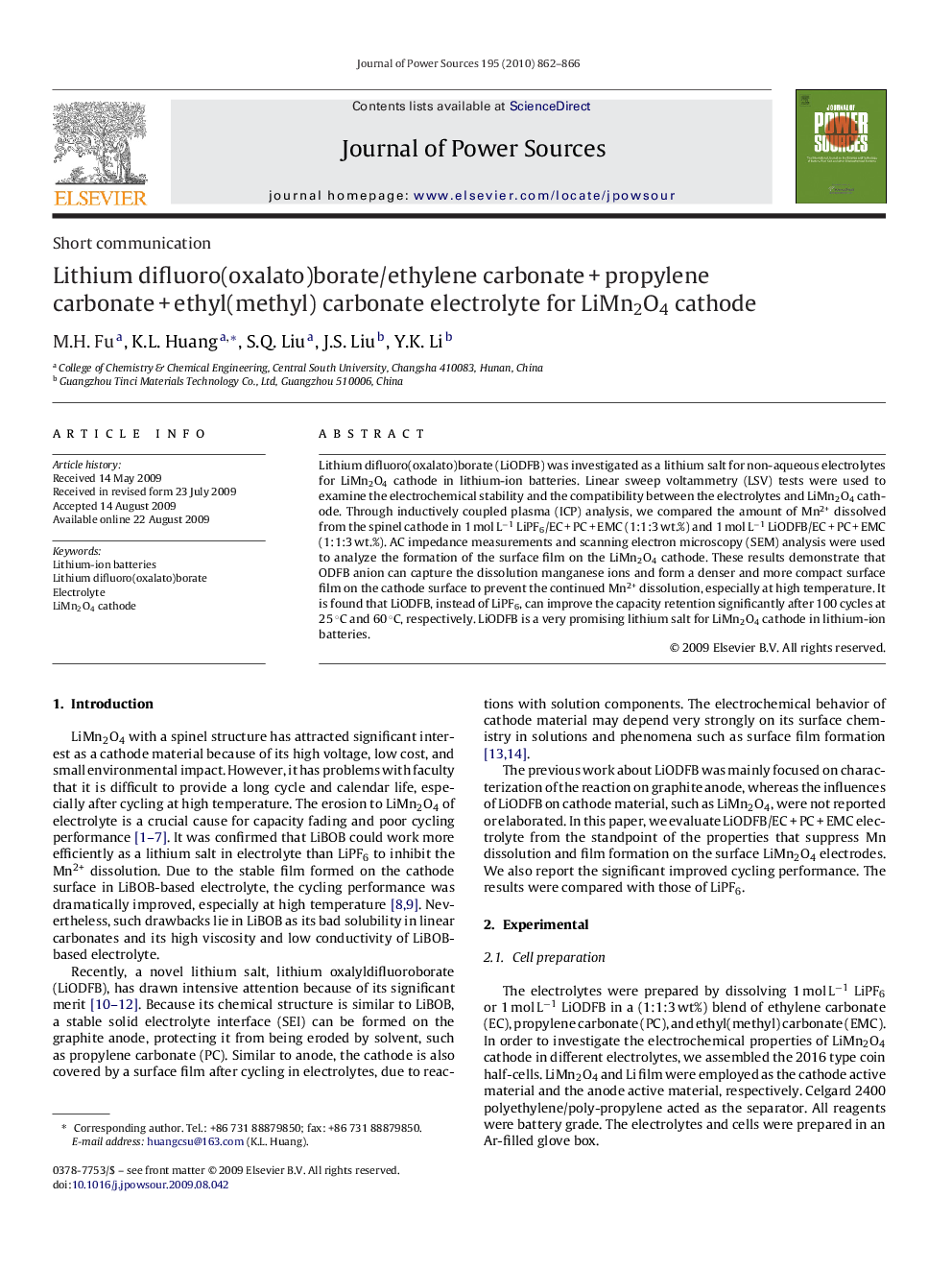| Article ID | Journal | Published Year | Pages | File Type |
|---|---|---|---|---|
| 1289324 | Journal of Power Sources | 2010 | 5 Pages |
Lithium difluoro(oxalato)borate (LiODFB) was investigated as a lithium salt for non-aqueous electrolytes for LiMn2O4 cathode in lithium-ion batteries. Linear sweep voltammetry (LSV) tests were used to examine the electrochemical stability and the compatibility between the electrolytes and LiMn2O4 cathode. Through inductively coupled plasma (ICP) analysis, we compared the amount of Mn2+ dissolved from the spinel cathode in 1 mol L−1 LiPF6/EC + PC + EMC (1:1:3 wt.%) and 1 mol L−1 LiODFB/EC + PC + EMC (1:1:3 wt.%). AC impedance measurements and scanning electron microscopy (SEM) analysis were used to analyze the formation of the surface film on the LiMn2O4 cathode. These results demonstrate that ODFB anion can capture the dissolution manganese ions and form a denser and more compact surface film on the cathode surface to prevent the continued Mn2+ dissolution, especially at high temperature. It is found that LiODFB, instead of LiPF6, can improve the capacity retention significantly after 100 cycles at 25 °C and 60 °C, respectively. LiODFB is a very promising lithium salt for LiMn2O4 cathode in lithium-ion batteries.
